Review: Grossly overpriced tea at the Lao She Teahouse in Beijing
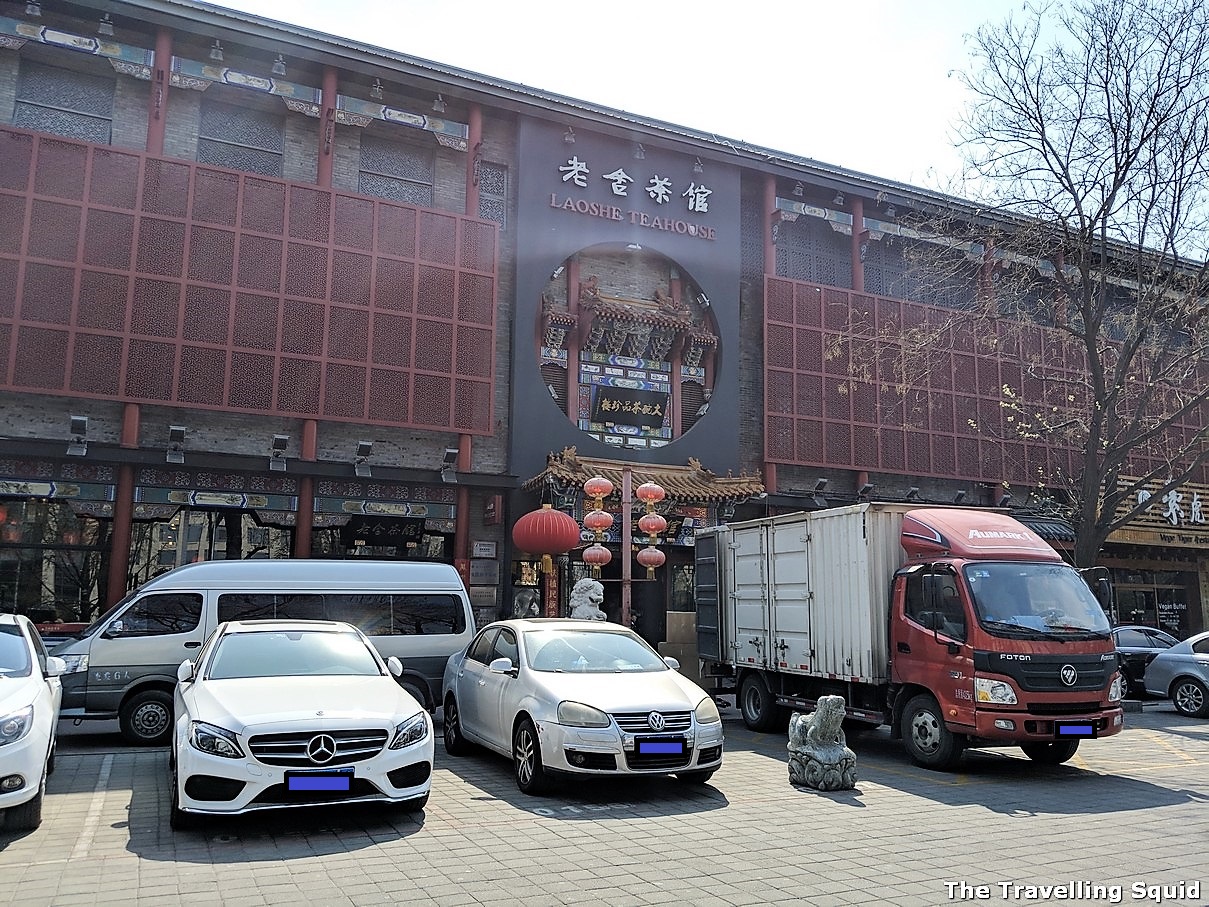
I decided to visit the Lao She Teahouse in Beijing, due to positive reviews on Chinese food review site Dian Ping. My guard against tea houses which overcharge were at an all time low, having had two very positive tea-drinking and buying experiences, namely at Qiao Bing Shan Fang and at Tianshan Tea City in Shanghai. I later to came to realise that I had paid about 8 times more the market value of a Jasmine leaf tea (茉莉针王). Sadly, I gained nothing from the experience and left with a much emptier wallet. Here’s the story of my experience having grossly overpriced tea at the Lao She Teahouse in Beijing.
I should have seen the signs – that the Lao She Teahouse was more focused on form (the decor and aesthetics of the place), as opposed to substance – the quality of its teas and the process of brewing it. When I first entered the first floor of Lao She Teahouse in Qianmen, I was asked to purchase a performance ticket at RMB180. I was not interested in performances – I went there to try good teas and conveyed this to the staff manning the ticketing counter. He told me to head up to the second floor, where the Si He Tea House was.
The retail area (2nd floor)
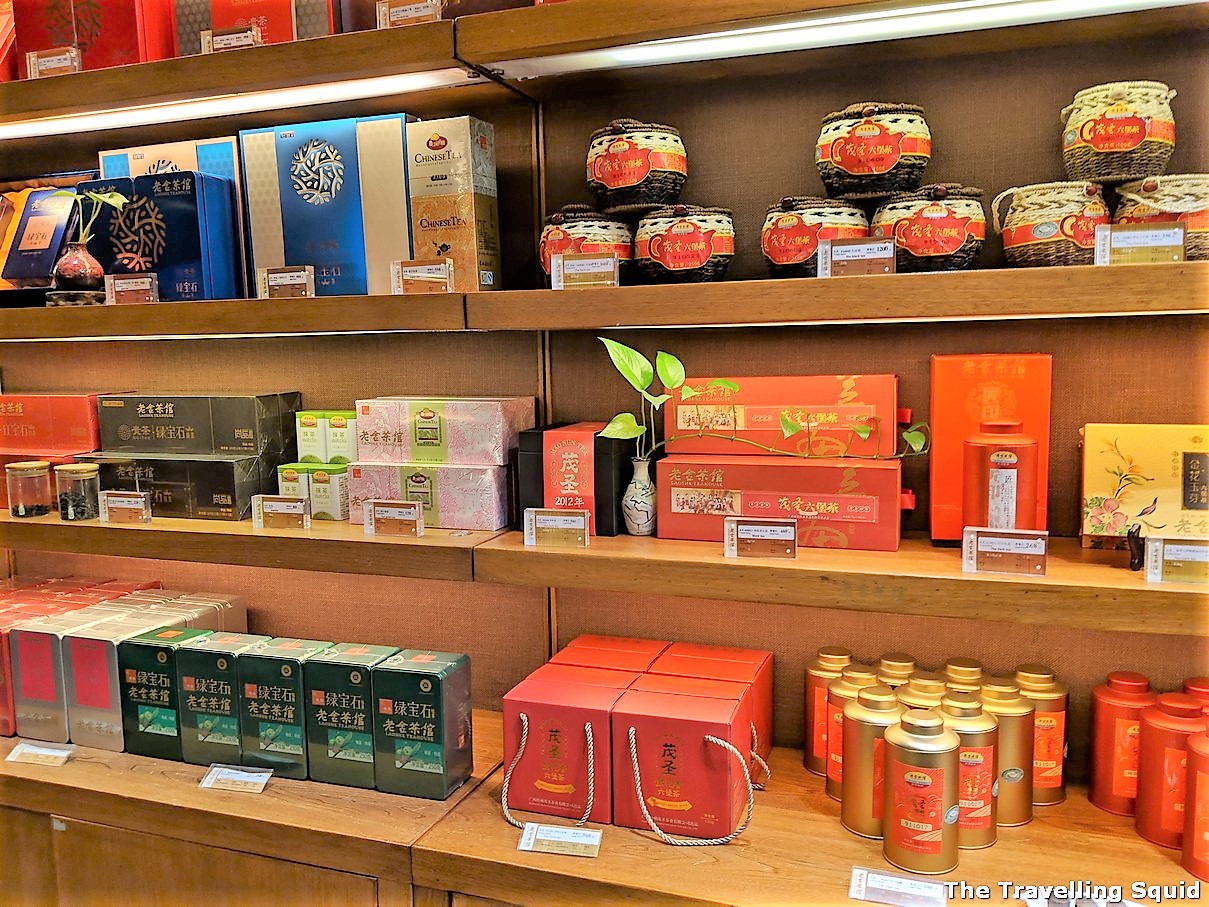
When I arrived at the second floor, there was a retail area where teas were sold. There were all sorts of teas in well packaged boxes. Even the tea cakes had crepe paper packaging, all branded with the Lao She Teahouse branding. They were more expensive than the teas I had seen at Tianshan Tea City in Shanghai. A 200g pu er tea cake was RMB300, compared to the RMB180 pu er tea cake I had purchased earlier. I asked the staff what type of tea is drunk by Beijingers, and I was told that it was Jasmine Tea (茉莉花茶).
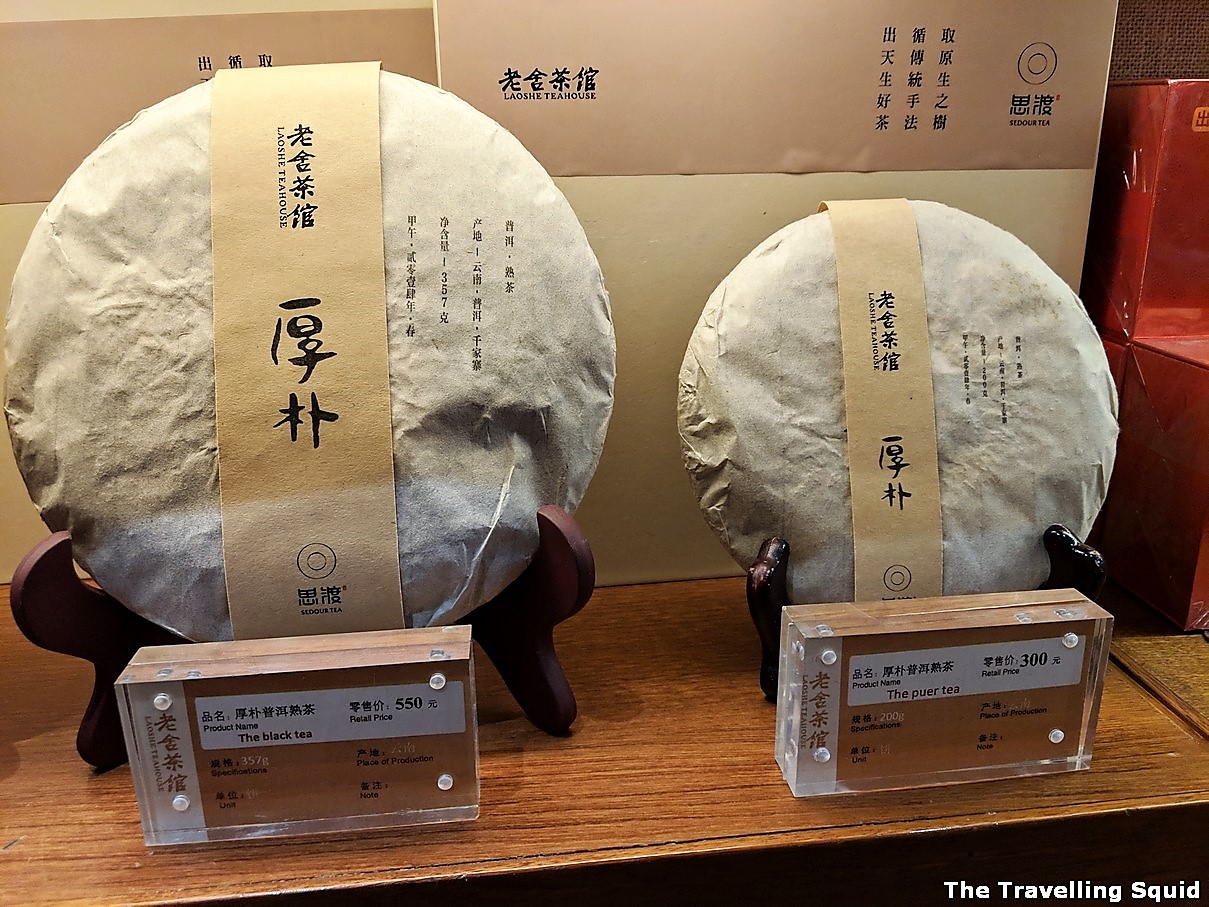
I should have seen the signs of Lao She Teahouse being a tourist trap coming. There were exhibits of clay figurines in various settings back in the past – people at a barbershop or traditional chinese medicine shop for instance. I thought these were nice, but not absolutely necessary.
Si He Teahouse (四合茶院) (2nd floor): Branch of Laoshe Teahouse with Tea Rooms
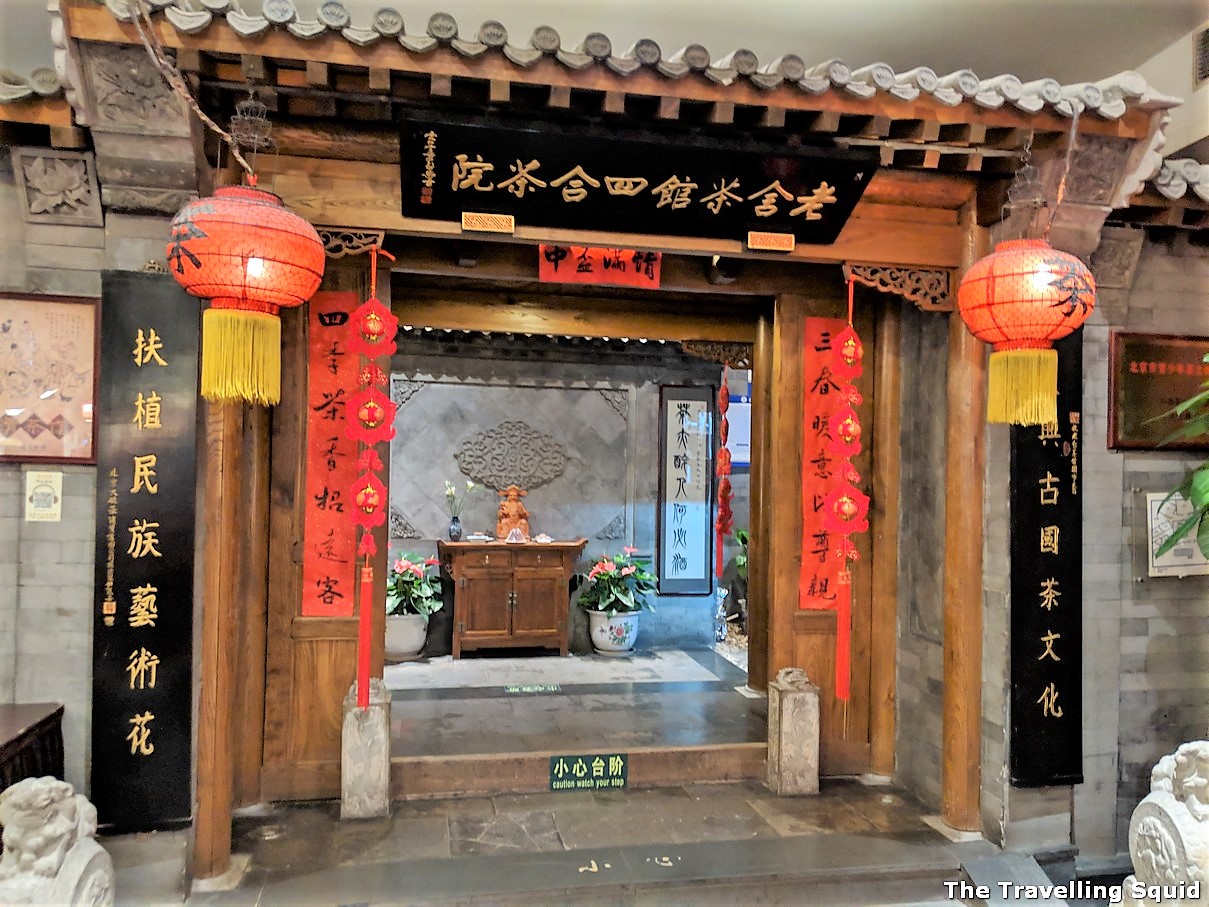
I then went over to the Si He Teahouse on the same floor. The staff told me that there was a tea room available at RMB50 / USD7.40 / SGD10. (They did not say that it was an hourly charge. I only learnt about that after scruntinising the last page of the menu). I thought RMB50 for a room was fine as I wanted to experience drinking tea at a local teahouse.
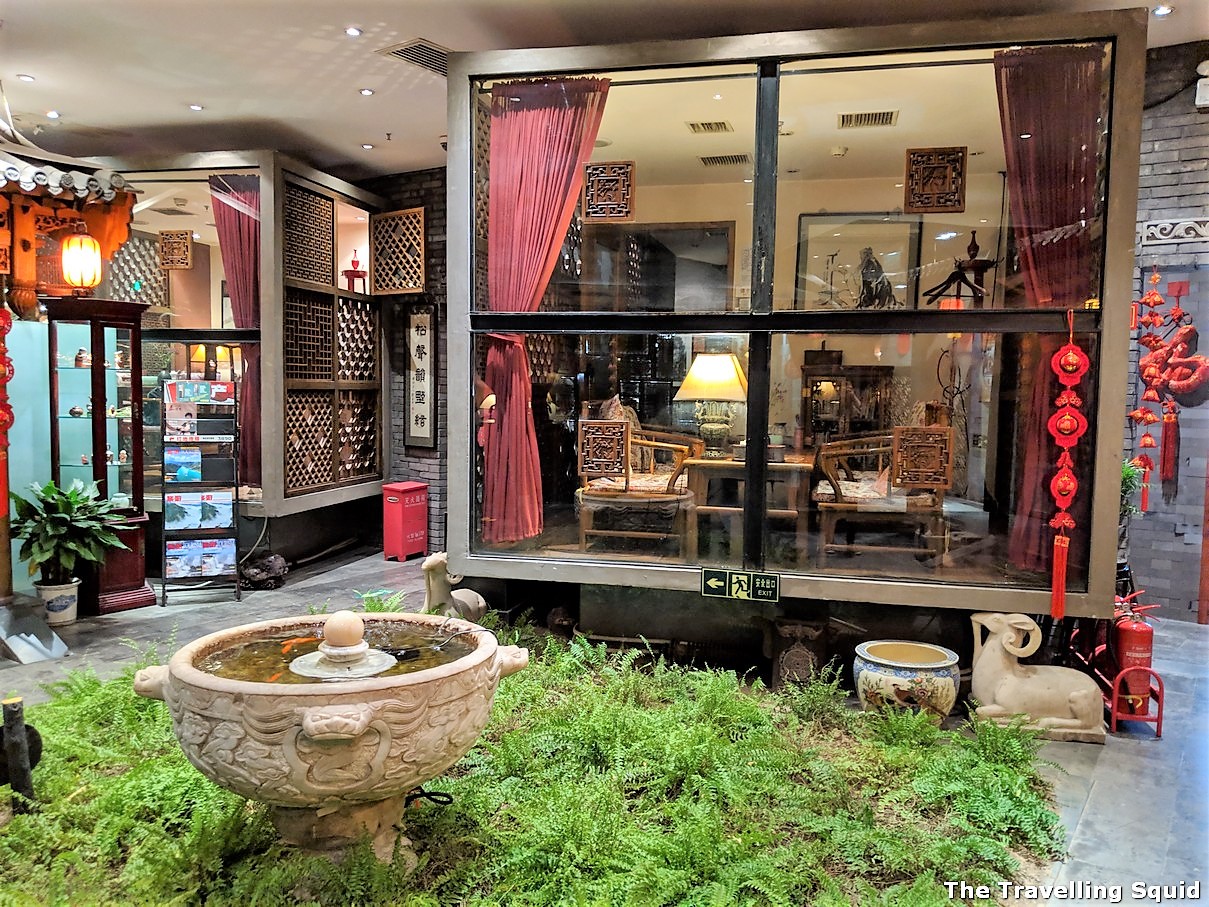
A well-furnished tea room, but…
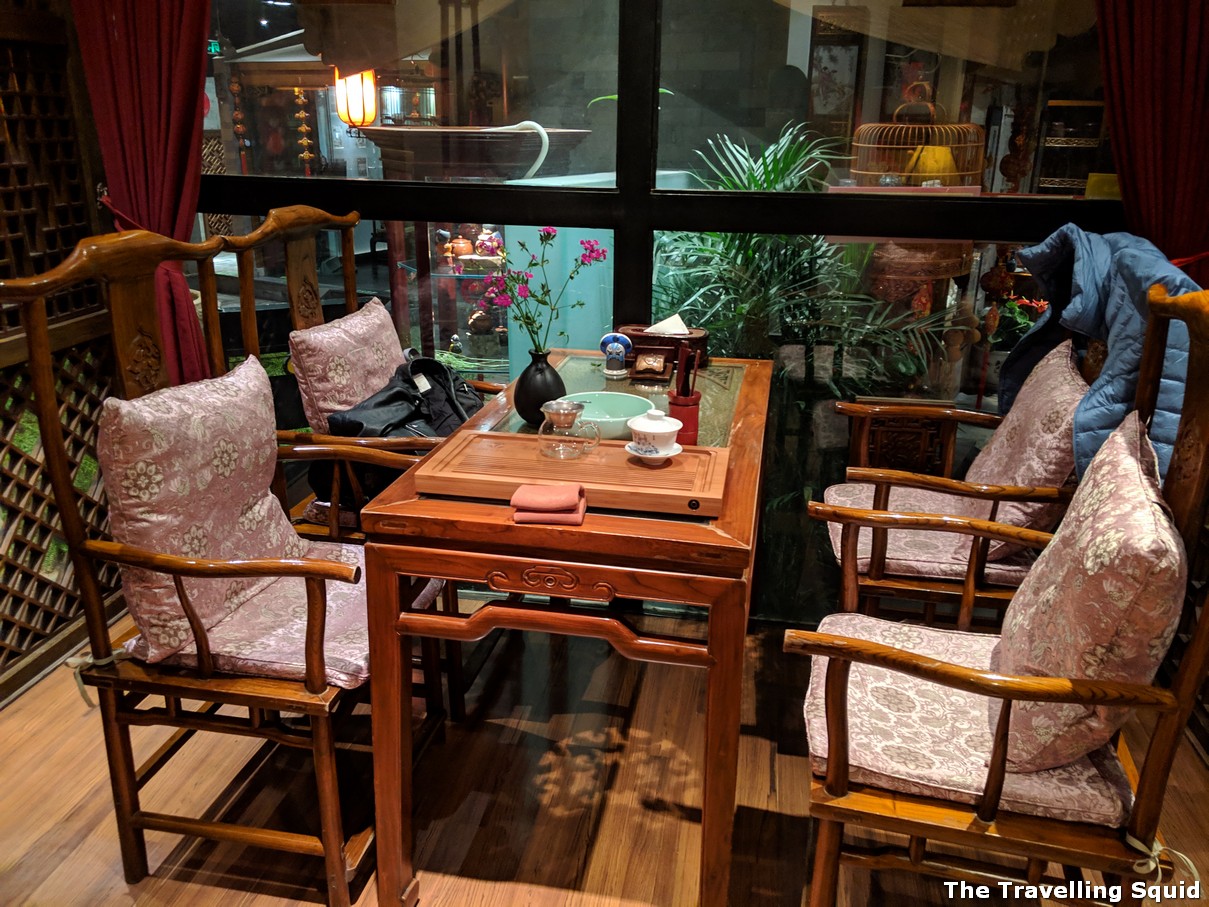
The staff led me to a room for four. It was decorated in an oriental style. There were Chinese-styled chairs and a traditional tea setup on the table. This included a bowl and tea tray for storing water after one washes the tea cups. The room was fitted with glass walls and I could see a live bird in an ornate bird-cage outside. If I recalled correctly, there was the sound of running water in the background.
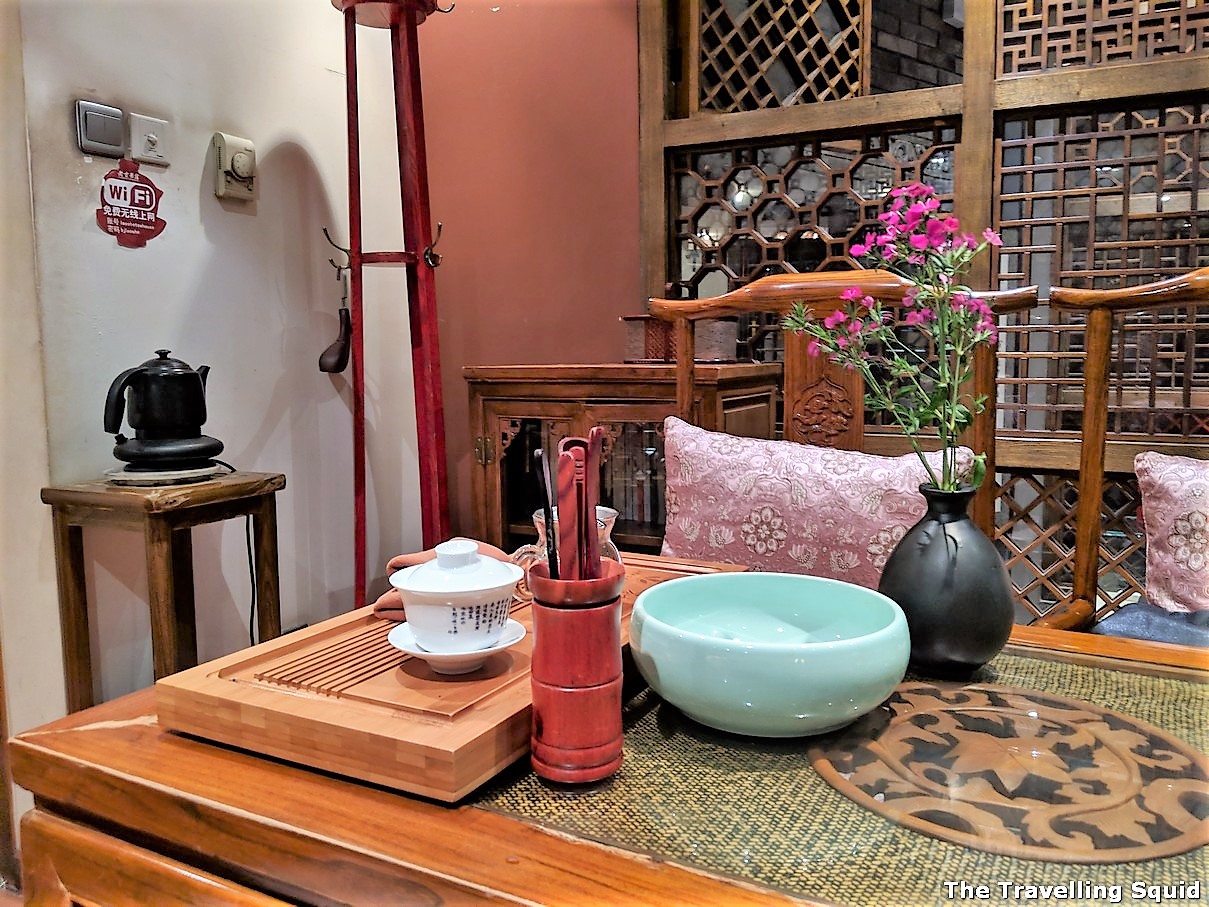
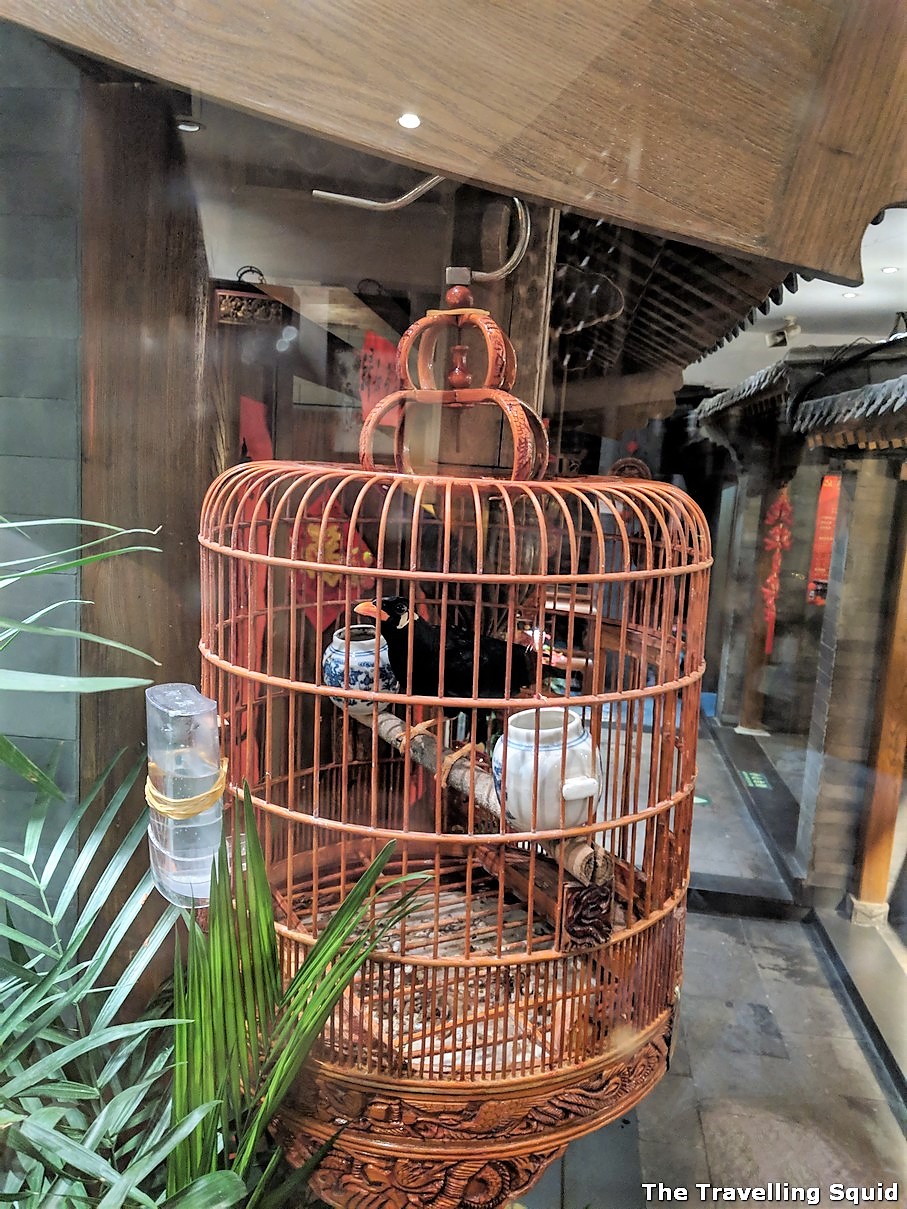
Prices on the Menu were alarming!

I received a big shock when I flipped through the menu. The cheapest of the teas available was RMB380/ USD56 / SGD77. There were an option of ordering one serving of tea at RMB120. However, I was still invested in the tea service experience and decided to go forth and order a RMB380 tea. I thought that the tea apparatus on the table will be utilised, especially given the premium price charged. Separately, I asked the staffabout the price of pu er (that’s my favourite tea) as it was not on the menu. The staff quoted me prices around the RMB1,000 range which got me worried. I decided to stick to the teas on the menu instead.
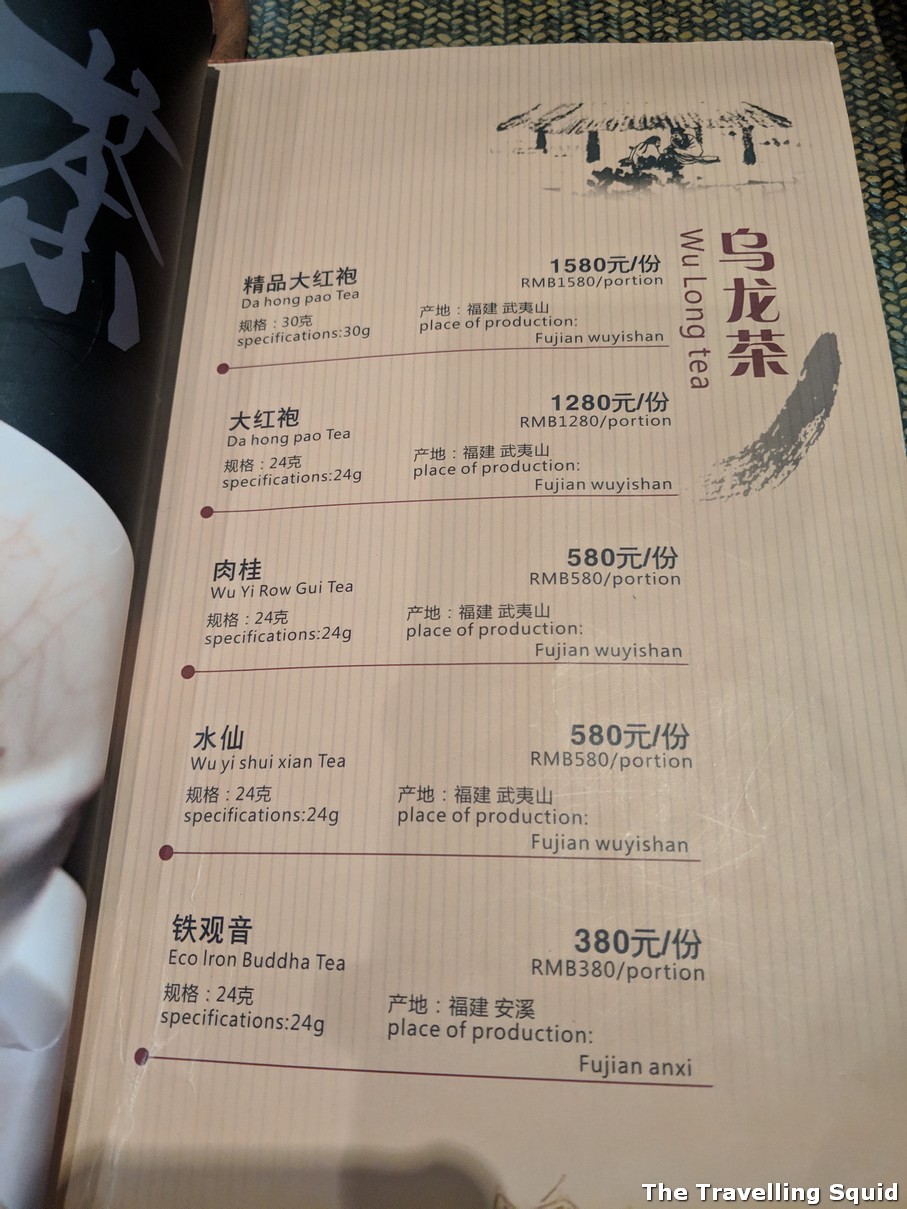
There were just a few teas priced at RMB380 – a Tie Guan Yin, a Yunnan black tea and Jasmine tea. I opted for Jasmine tea as it was a tea drank by Beijingers, according to the staff I spoke to earlier. The staff selected a Jasmine tea for me (茉莉针王) (it’s made up of leaves from the Jasmine flower).
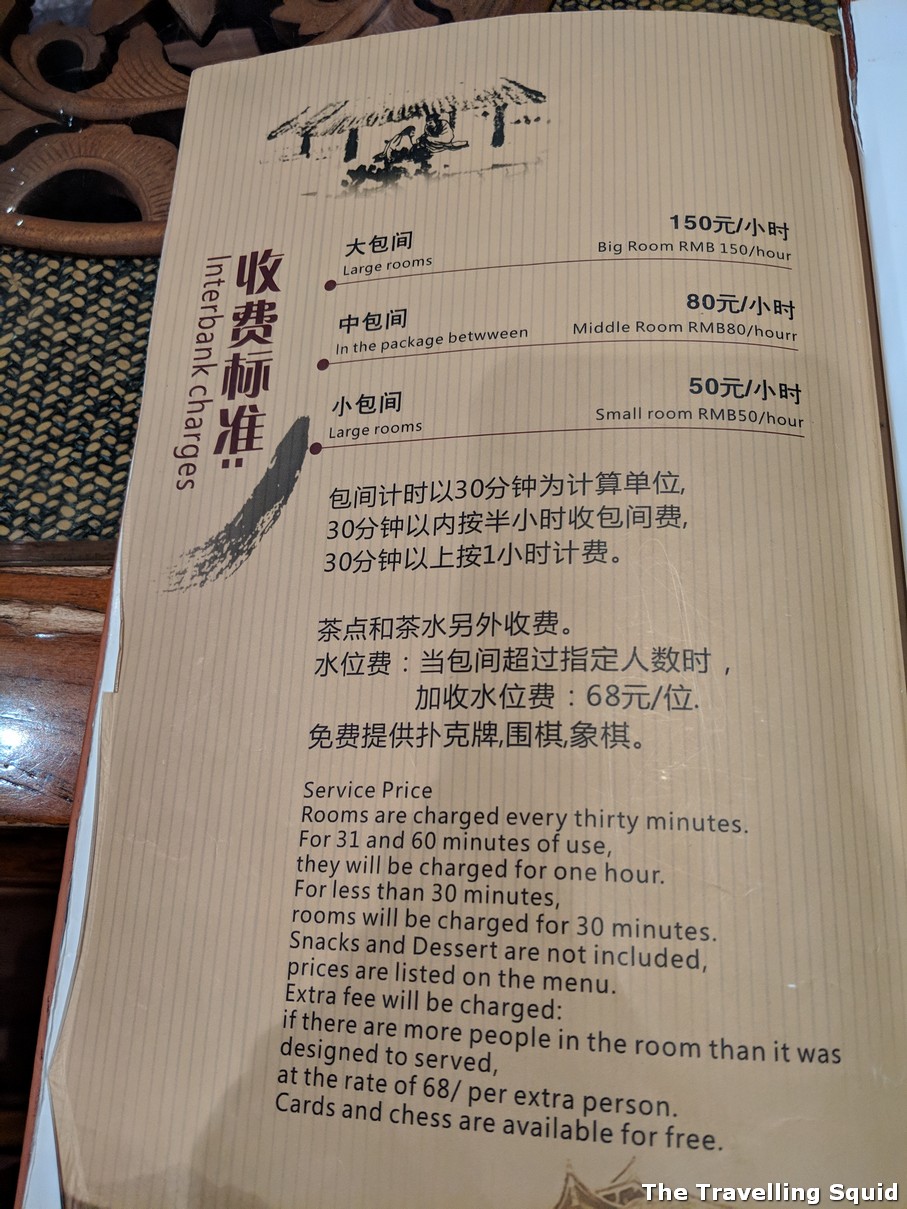
Extremely disappointing tea service

My disappointment grew when the tea arrived. The staff brought over a box with five packets of Jasmine leaves in individual sachets. Instead of utilising the tea apparatus on the table, she teared open the sachet containing the leaves and poured them into a tea cup. She then poured boiling water over the tea leaves and told me to have a sip any time i wished to. Now at this point I was taken aback and asked the staff if there was a need to wash the leaves, or give it any other treatment before drinking. The only response I got was – ‘There is no need for that’. Then, as if to soothe my feelings about the lack of tea service, she said, ‘There are four more packets of tea which you can drink or take with you.’ -.-” (Til this day, the four packets have travelled with me back to Singapore, but have yet to be consumed).

Now in my mind, I thought – “What is the explanation for the brewing process?” – Now the staff could have said – for white teas, we usually don’t ‘wash’ the teas as the flavour is mild. They are usually packaged right after harvesting, so compared to aged-old pu ers, there isn’t a need to pour away the first brew. (I made such an inference after a quick research online.) One does not pay RMB380 + RMB50 to come to a tea house to sip tea from a cup, which can be easily done from the comforts of one’s hotel room.
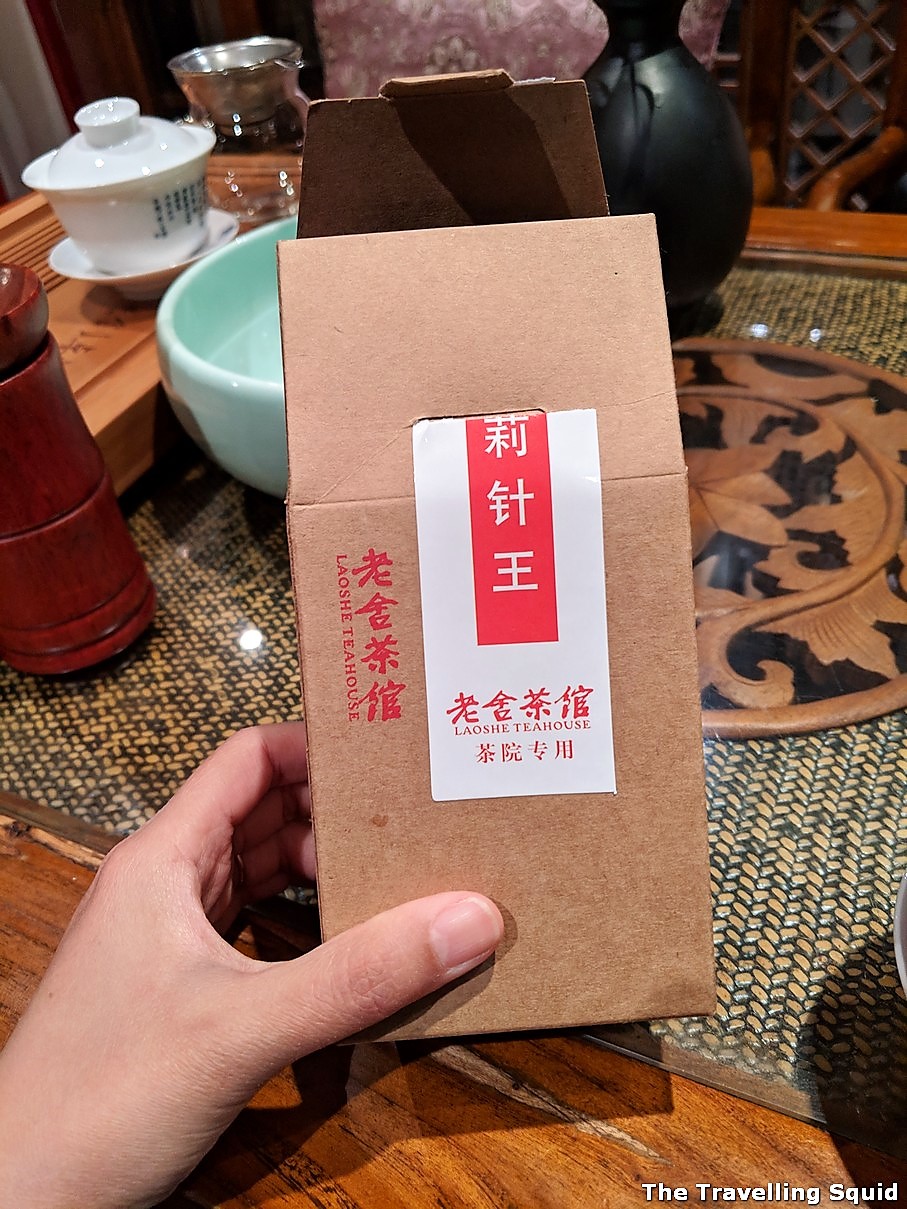
The Jasmine leaf tea (茉莉针王)
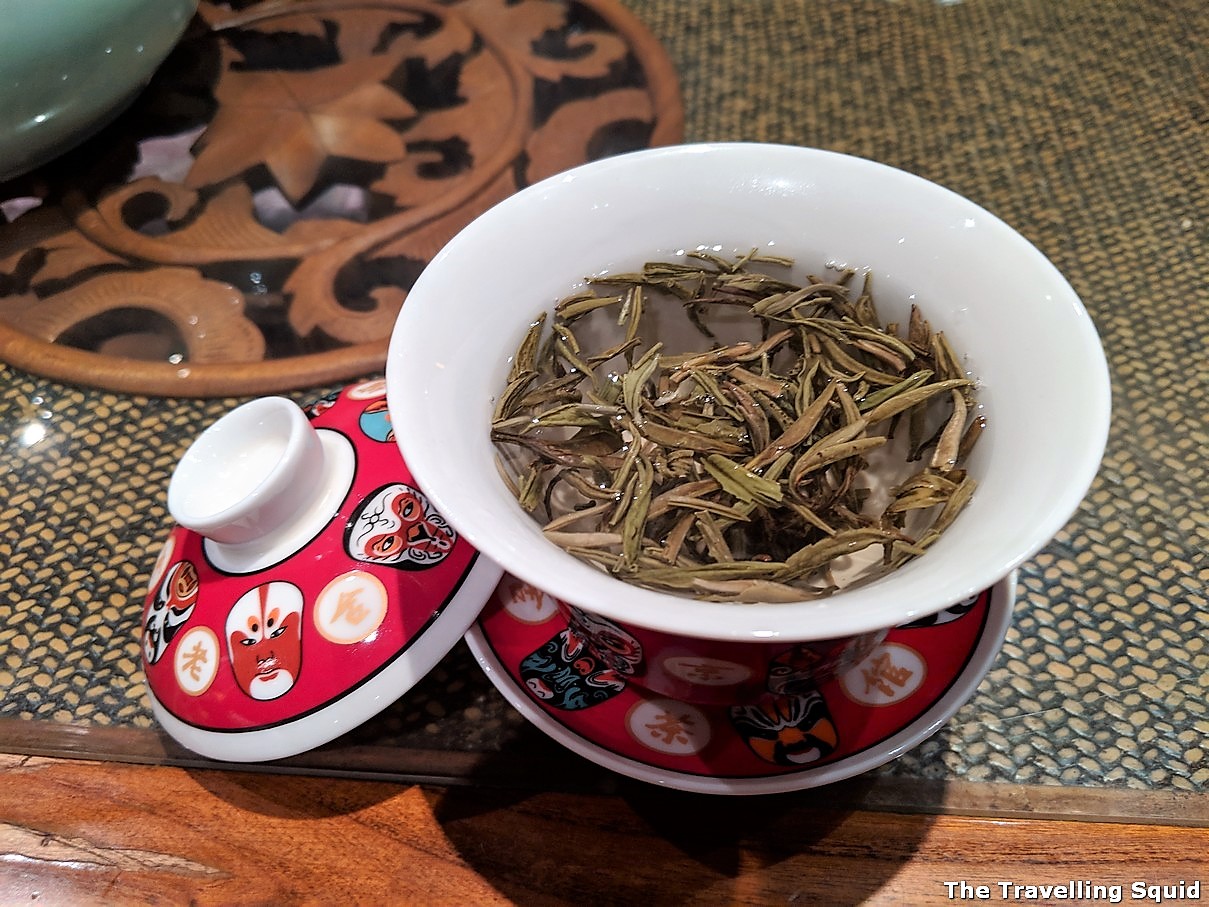
To rub salt into my wounds, the tea wasn’t good, it was mediocre at most. I read that for a good quality Jasmine leaf tea (茉莉针王), it is warmed up together with Jasmine flowers at 48 degree Celsius, allowing the fragrance from the Jasmine flower to permeate the leaves and vice-versa. For this particular tea, there was no such Jasmine fragrance. It fact, it tasted dry and somewhat astringent.
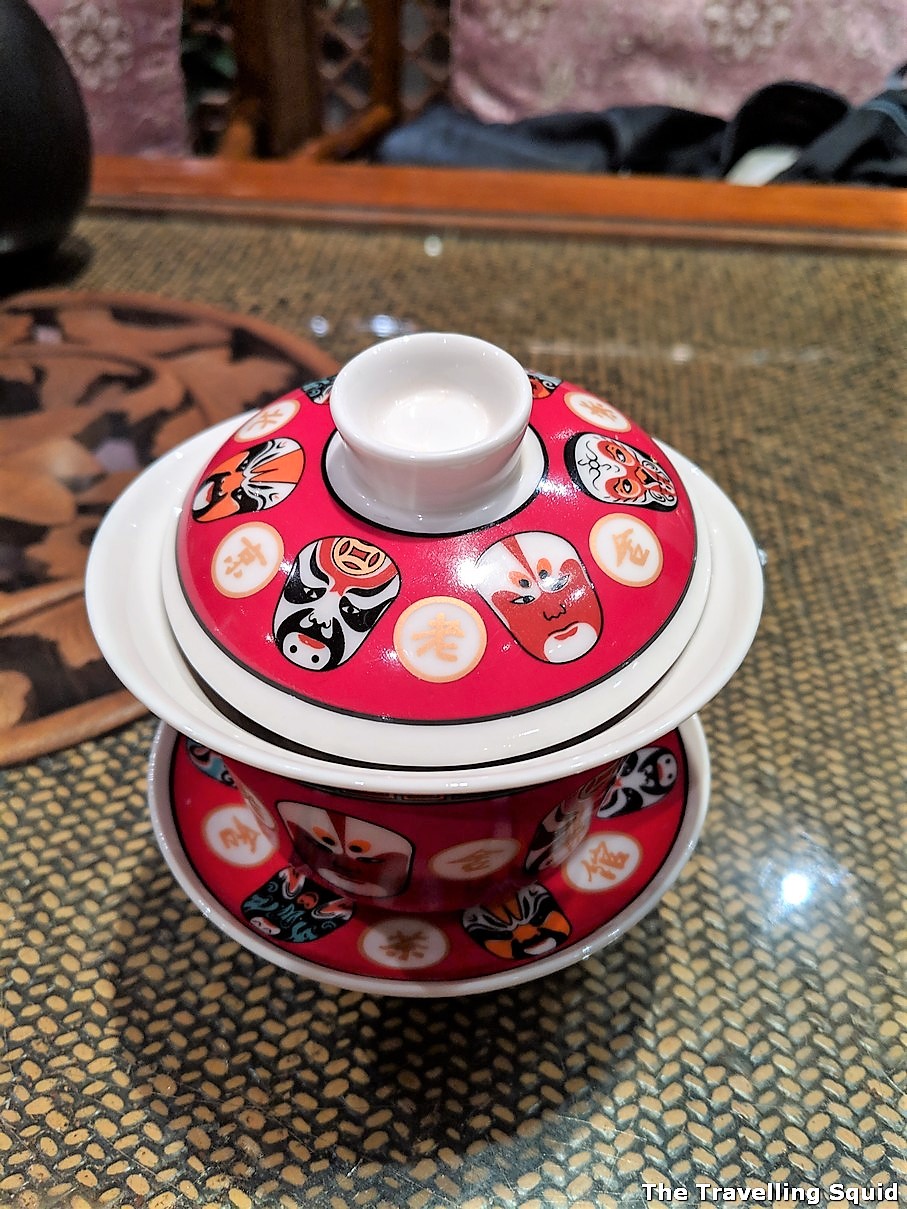
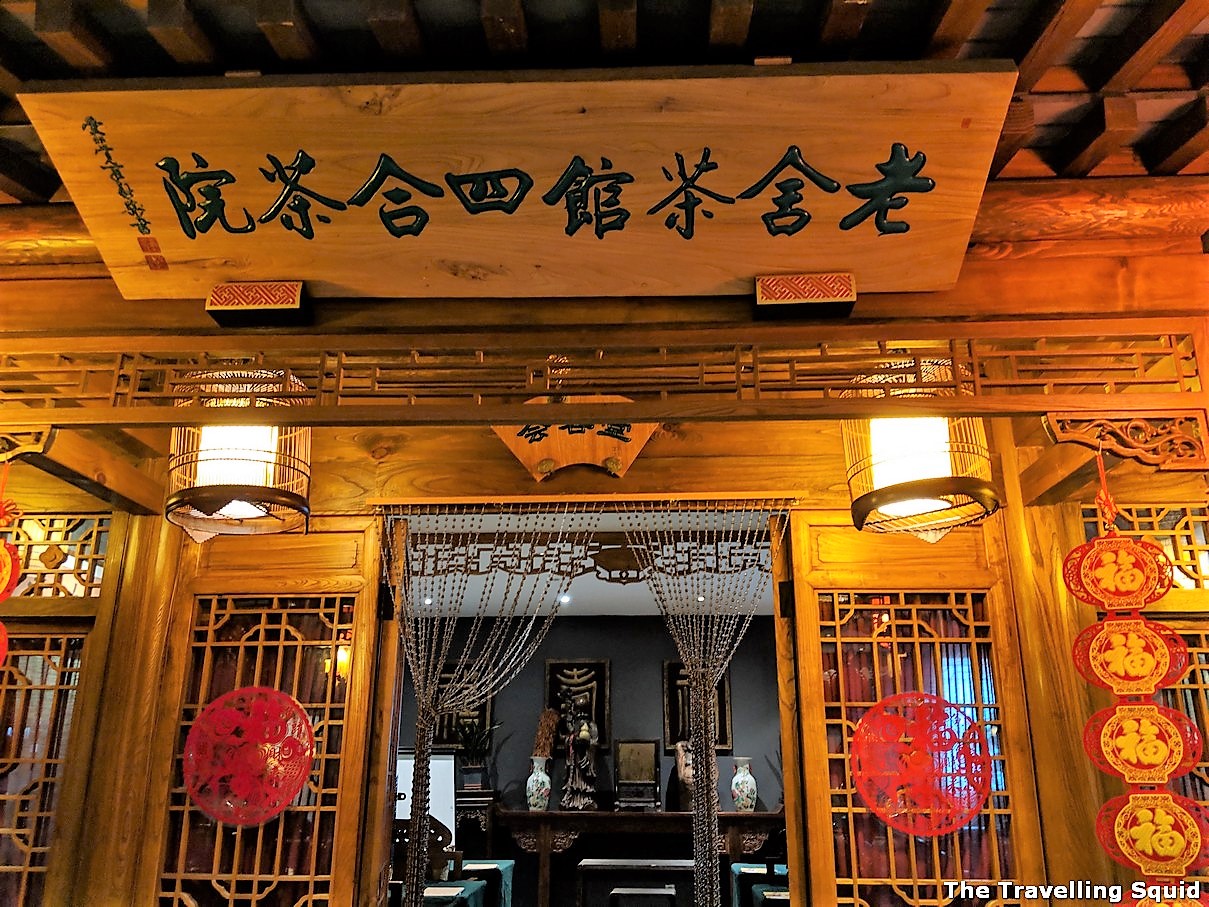
I looked at my watch after 3-4 cups of tea – 45 minutes had passed. I hurried out to use the washroom, for the fear that I would be charged again for an additional usage of the room beyond an hour. When I stepped out, I realised that there was a garden at the center of the Si He Tea House, with a water feature and an artificial bridge over it. Alas, that was similar to the description of Si He Tea House on the menu. Errk. I had come to try good teas, not to partake in the aesthetics of a man-made bridge and water feature. As expected, the oriental decor stretched into the washroom, as I washed my hands in the porcelain basin provided (picture below).
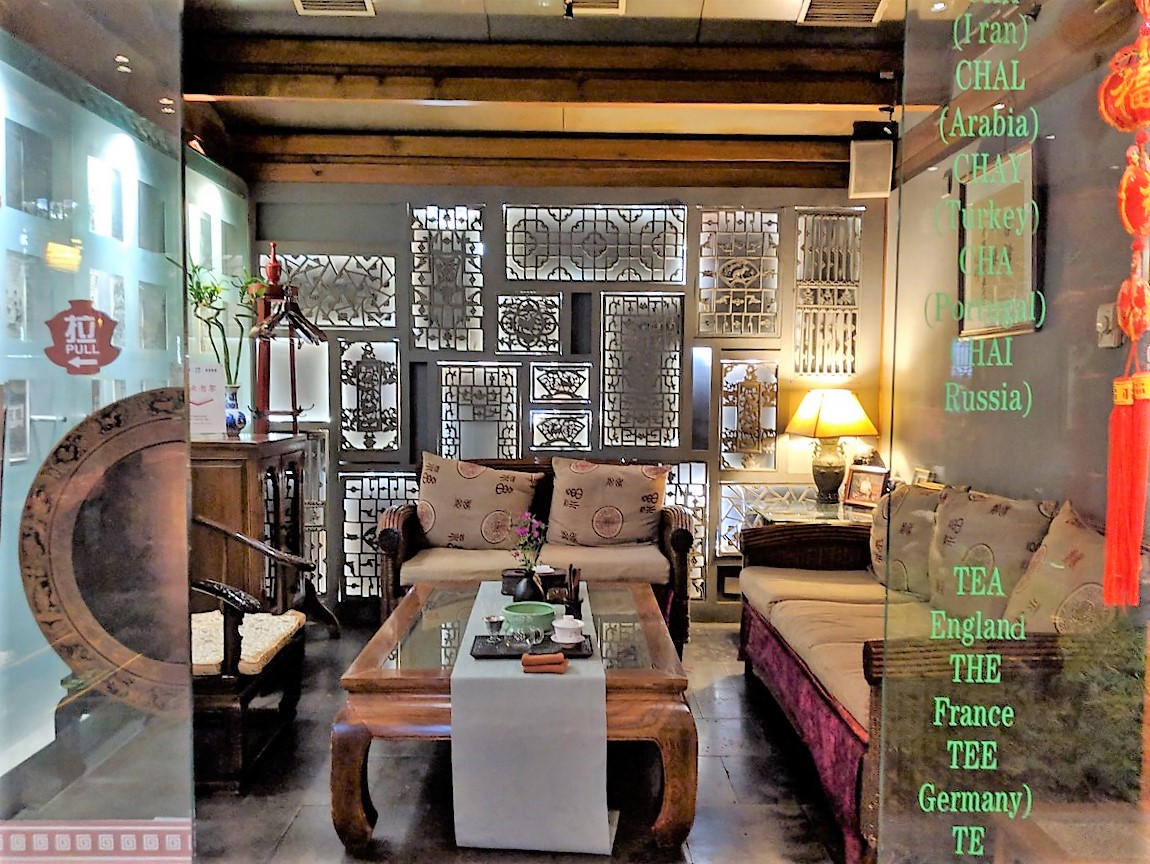
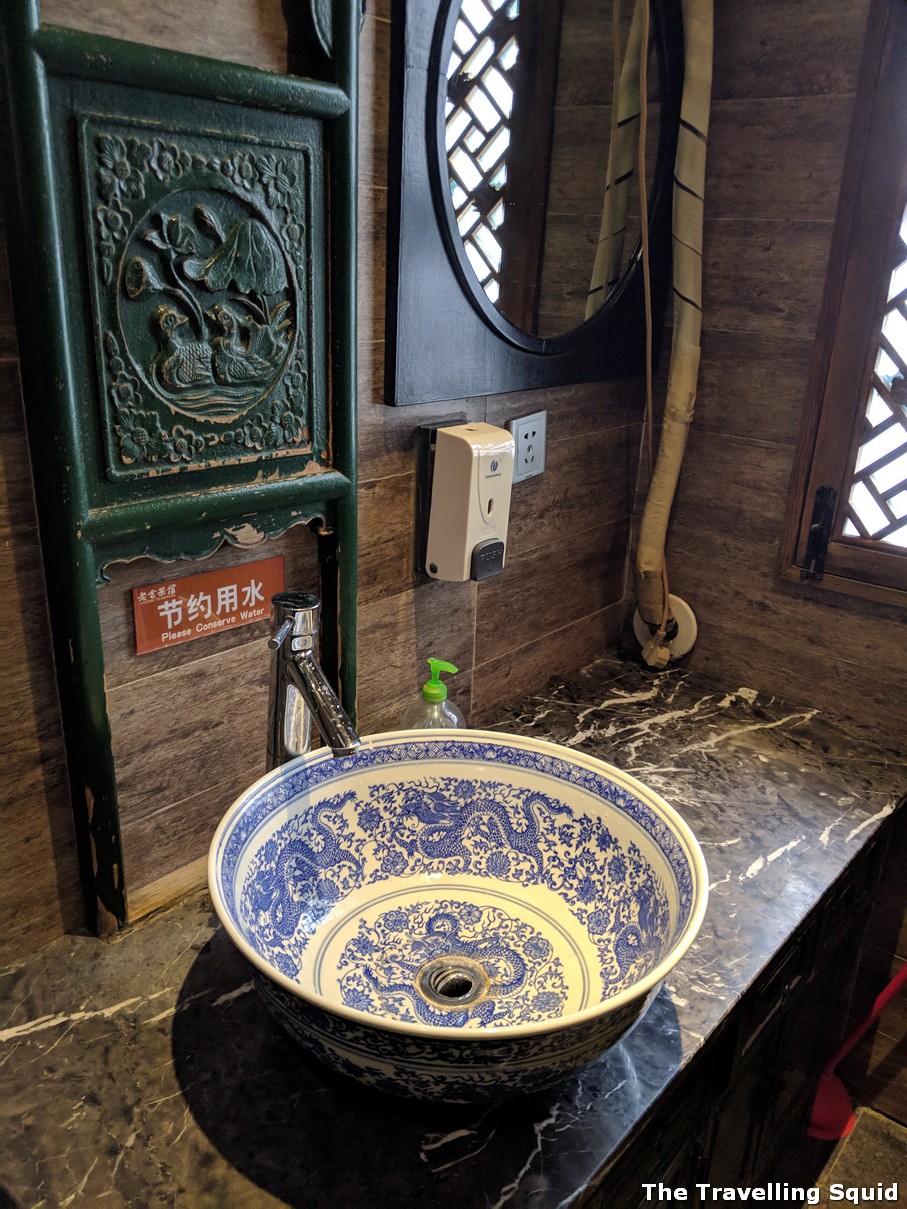
In my head, all I could think was – I had paid a whooping RMB430 / USD64 / SGD87 for such excesses! Some would have deemed these as Instagram-worthy, but not me. I grimaced internally as I paid the bill, vowing never to return. Alas, The Travelling Squid had fallen into a tourist trap.
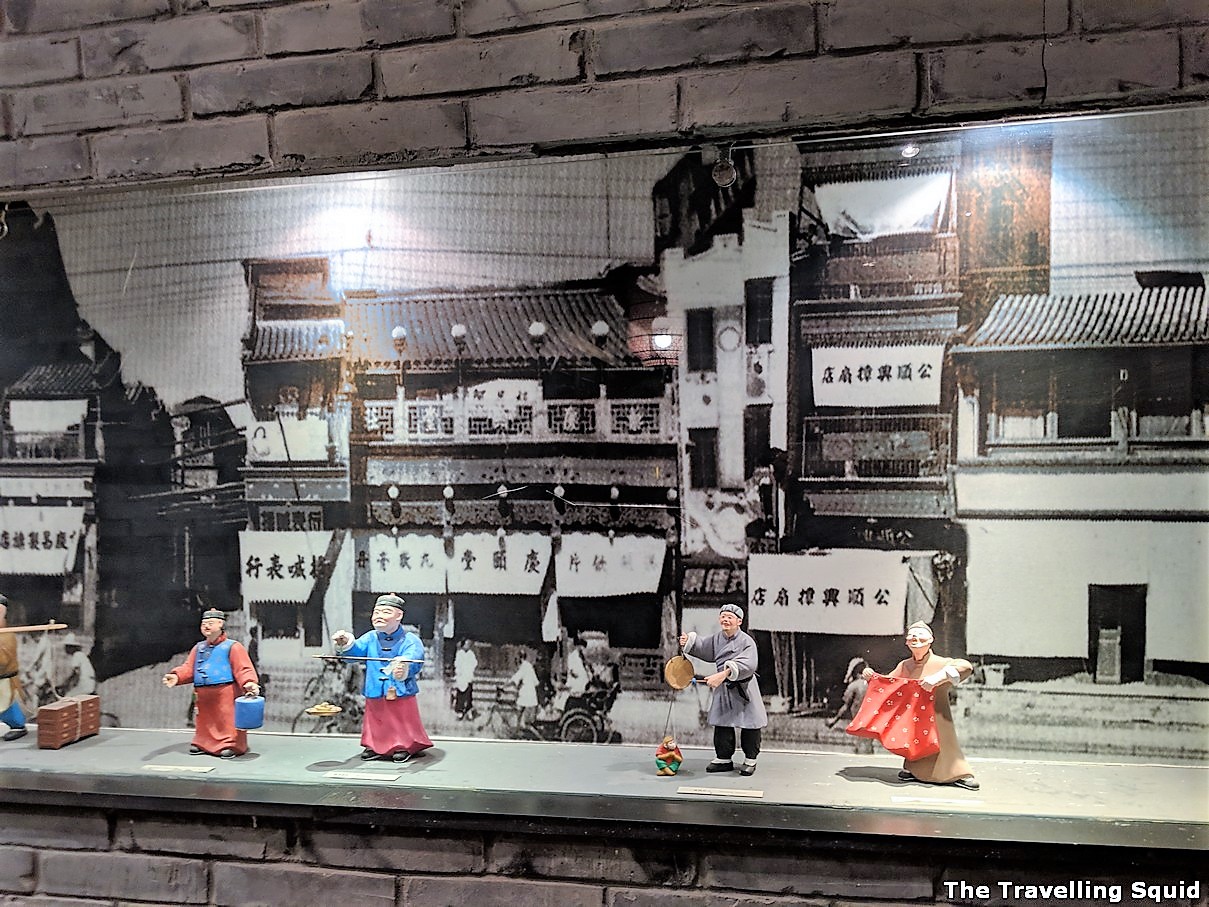
The Travelling Squid’s Take
Lao She Teahouse is clearly a place which prioritises form over substance. I should have seen it coming – the performances, the lavish furnishings in its tea rooms, the man-made pond with an artificial bridge over it, and the live bird in an ornate bird-cage. These costs were probably factored into the price of its teas. As a point of comparison, I did some research online on the price of Jasmine leaf teas (茉莉针王) on Taobao and JD.com. My research revealed that for the same quantity (15g), the price of teas ranged from RMB25 – RMB75, compared to the RMB380 price I paid. This was about 8 times more.
I believe the reason why I fell into this tourist trap was due to the trust I had accorded to this tea house. I had two excellent tea-related experiences in Shanghai and I thought that reputable tea houses could be trusted. A lesson learnt is to always check the prices in a tea house’s menu before settling down. Do not take online reviews as fact. The reason could be that the staff, upon seeing that you’re a foreigner, may hand you a menu with higher prices.
I learnt that for tea houses, substance and form can be inversely related. At Qiao Bing Shan Fang, the decor was simple – there were books, wooden shelves and old furniture. I felt as if I’d walked into a tea lover’s dining room or garden. With the Lao She Tea House, it became clear that with its desire and pursuit for opulence, the consumer would have to pay for it.
Have you been to the Lao She Teahouse in Beijing? Let me know what you think!
* * *
Grossly overpriced tea at the Lao She Teahouse in Beijing
(Here are the details, though I strongly advise one to exercise caution.)
- Address: China, Beijing Shi, Xicheng Qu, Qianmen W St, 正阳市场3号楼 邮政编码: 100051
- Tel: +86 10 6302 1717
- Website: http://www.laoshehouse.com/ (Website is in Chinese)

Leave a Reply